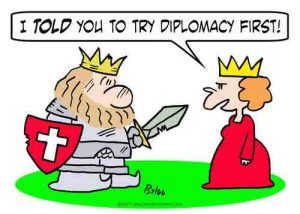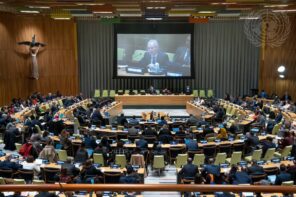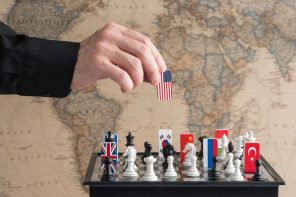
Friday July 12, 2013
The Many Faces of Cultural Diplomacy
Like a lot of buzzwords flying around today, the concept of Cultural Diplomacy can seem at once straightforward and yet elusive. What exactly is it, and how can we apply it to our lives?
It was probably Dr Emil Constantinenscu who said it best:

“Cultural Diplomacy may best be described as a course of actions, which are based on and utilize the exchange of ideas, values, traditions and other aspects of culture or identity, whether to strengthen relationships, enhance socio-cultural cooperation or promote national interests; Cultural diplomacy can be practiced by either the public sector, private sector or civil society.”
Diplomacy as a concept is hardly new, and while the terminology isn’t old, the art of Cultural Diplomacy goes back in to history, yet many people have yet to tap into the full potential of this subdivision of soft power. By understanding different cultures and using culture as a platform for mutual appreciation and common ground, governments and countries can find a common ground through which to foster better relations.
What Constitutes Cultural Diplomacy?
Well, it could be almost anything – recently we worked on A Soldier’s Tale, celebrating 60 years of the ceasefire of the Korean War, and 130 years of diplomatic relations between Korea and the UK. Through their art, the participating artists told the stories of veteran soldiers who had fought in Korea, bridging generations and cultures through the universal language of art.
The exchange of traditions, food, art, literature and music all constitute different forms of cultural diplomacy, and you could think of explorers, travellers, traders and teachers (and especially artists) as cultural diplomats in their own right.
As the Institute of Cultural Diplomacy puts it:
“Cultural Diplomacy (or “Diplomacy between Cultures”) has existed as a practice for centuries. No longer relegated to the periphery of the international relations discipline, cultural diplomacy today is a vibrant and innovative academic field of research and has successfully established itself as a stand-alone theory and practice.
Through the interaction of peoples, the exchange of language, religion, ideas, arts and societal structures have consistently improved relations between divergent groups.”
Why Is It So Important?
In today’s increasingly globalised world, where Facebook, Twitter and other social media are breaking down the once-inconceivable distances between nations, we come face to face more and more with different cultures, ways of thinking, and traditions. By better understanding them, we not only gain a better understanding of the world around us, but can interact better with our peers – be it for personal relations or business. It can inform your marketing campaigns, so you reach out better to your audiences, while making connections with them you can only achieve through better understanding their culture. It can lead to new and stronger relationships as people feel they are truly being listened to, and vice versa. Cultural Diplomacy is a powerful tool.
For those of you interested in reading a bit more, here are some interesting links for your weekend reading:
Arts as Cultural Diplomacy http://artsasculturaldiplomacy.wordpress.com/
Institute of Cultural Diplomacy http://www.culturaldiplomacy.org/index.php?en
Cultural Diplomacy in the News http://culturaldiplomacynews.wordpress.com/
Curzon PR is a London-based PR firm working with clients globally. If you have any questions, please feel free to contact our Business Development Team bd@curzonpr.com







Follow us